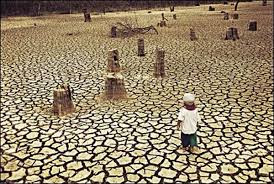Dear Future Generations,
I think I speak for the rest of us when I say,
sorry, sorry we left you our mess of a planet.
Sorry that we were too caught up in our own doings to do something.
Sorry we listened to people who made excuses,
to do nothing.
I hope you forgive us,
we just didn't realize how special the earth was,
like a marriage going wrong,
we didn't know what we had until it was gone.
For example,
I'm guessing you probably know what is the Amazon Desert, right?
Well believe it or not,
it was once called once called the Amazon Rain Forest,
and there were billions of trees there,
and all of them gorgeous and just um..
Oh, you don't know much about trees, do you?
Well let me tell you that trees are amazing,
and I mean, we literally breath the air
they are creating, and they clean up our pollution,
our carbon, store and purify water,
give us medicine that cures ours diseases, food that feeds us.
Which is why I am so sorry, to tell you that,
we burned them down.
Cut them down with brutal machines, horrific,
at a rate of 40 football fields every minute,
that's 50% of all the trees in the world all gone
in the last 100 years.
Why? For this.
And that wouldn't make me so sad,
if there weren't so many pictures of leaves on it.
You know when I was a child,
I read how the Native Americans had such consideration,
for the planet that they felt responsible,
for how they left the land for the next 7 generations.
Which brings me great sorrow, because most of us today,
don't even care about tomorrow.
So I'm sorry, I'm sorry that we put profit over people,
greed over need, the rule of gold above the golden rule.
I'm sorry we used nature as a credit card with no spending limit.
Over drafting animals to extinction,
stealing your chance to ever see their uniqueness,
or become friends with them.
Sorry we poison the ocean so much that you can't even swim in them.
But most of all, i'm sorry about our mindset,
cause we had the nerve to call this destruction,
"Progress".
Hey Fox News, if you don't think climate change is a threat.
I dare you to interview the thousands of homeless people in Bangladesh,
see while you was in your penthouse nestled,
their homes were literally washed away
beneath their feet due to the rising sea levels,
and Sara Palin, you said that you love the smell of fossil fuels,
well I urge you to talk to the kids of Beijing
who are forced to wear pollution masks just to go to school.
You see you can ignore this, but the thing about truth is,
it can be denied, not avoided.
so I'm sorry future generation,
I'm sorry that our footprints became a sinkhole and not a garden.
I'm sorry that we paid so much attention to ISIS,
and very little how fast the ice is melting in the arctic.
I'm sorry we doomed you
and I'm sorry we didn't find another planet in time to move to.
I am s...
You know what, cut the beat, I'm not sorry.
This future I do not accept it,
because an error does not become a mistake,
until you refuse to correct it.
We can redirect this, how?
Let me suggest that if a farmer sees a tree that is unhealthy,
they don't look at the branches to diagnosis it,
they look at the root, so like that farmer,
we must look at the root,
and not to the branches of the government,
not to the politicians run by corporations.
We are the root, we are the foundation, this generation,
it is up to us to take care of this planet.
It is our only home, we must globally warm our hearts
and change the climate of our souls
and realize that we are not apart from nature,
we are a part of nature.
And to betray nature is to betray us,
to save nature, is to save us.
Because whatever you're fighting for:
Racism, Poverty, Feminism, Gay Rights,
or any type of Equality.
It won't matter in the least,
because if we don't all work together to save the environment,
we will be equally extinct.
Sorry.
















